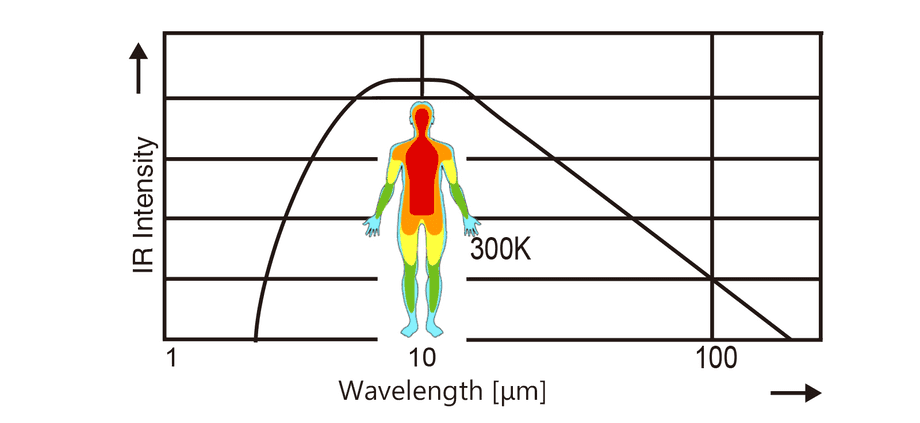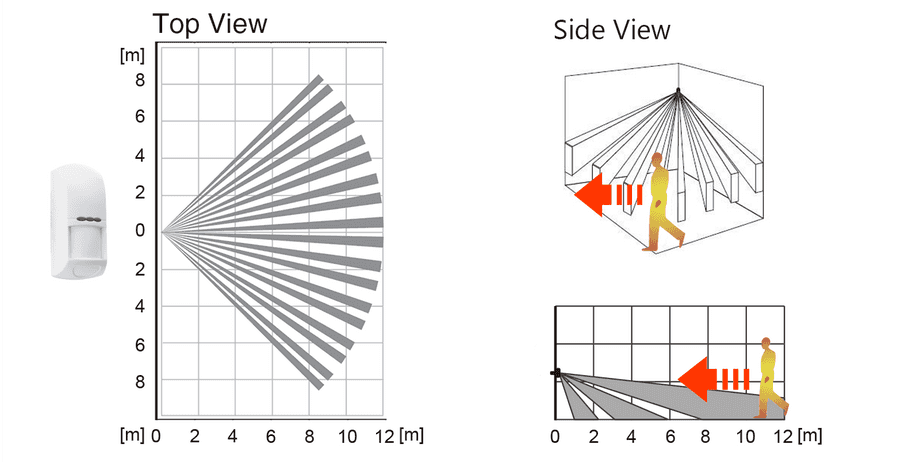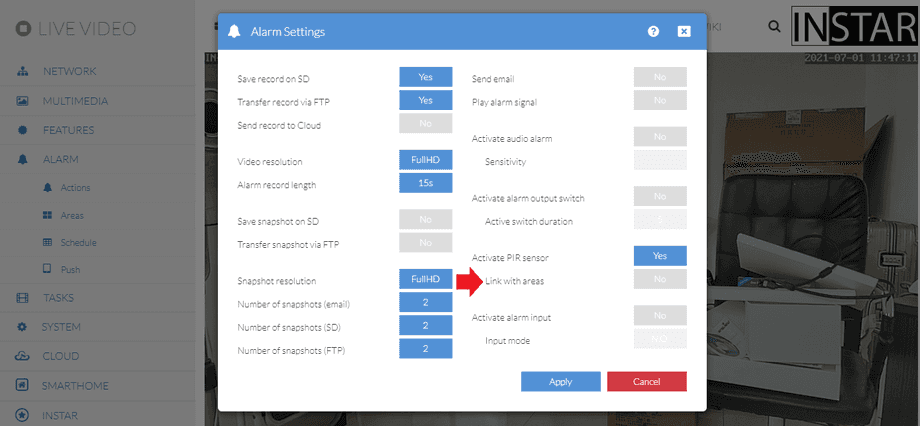Passive Infrared Sensors
Body Heat Detection
Most INSTAR cameras now come with an pre-installed passive infrared (PIR) sensor. PIR sensors detect changes in temperature in window of surveillance in front your camera. This can be the heat that is emitted by your body, or the hot engine bonnet of your car, in form of IR radiation. This radiation has wavelengths between 1 µm to 1,5 mm with a peak of emission around 10 µm and is invisible to the human eye.
Installation
Our indoor cameras (e.g. IN-8015 FHD, IN-8003 FHD, IN-8001 FHD) use a small PIR sensor with an horizontal angle of view of 120° and a range of approx. 5 m. The outdoor cameras (e.g. IN-9020 FHD, IN-9008 FHD) use a more powerful Panasonic PIR sensor that also has an horizontal angle of view of 120°, but a range of approx. 12 m.
Passive infrared sensor see the moving heat signal through a so called Fresnel lense that divides the field of view of the sensor into small windows - depicted as rectangular beams in the sketch above. A simple PIR sensor will trigger an alert once it "sees" a hot object leave one window and enters a neighbouring window. More sophisticated sensors apply small programs that allow them to rule out background "noise" as alarm triggers
The sensor is always more sensitive when they are installed in a way that you are forced to walk past them (upper graphic on the right) instead of walking toward them (lower graphic on the right).
Always install your sensors not in front of an entry by at a 90° angle to the side of it. This forces you to walk through all detection windows. Making sure that you definitely reach the trigger threshold for the alarm detection. It is also recommended to install your sensor close to the ceiling as the installed Fresnel lenses are designed to "look" down. The installation close to and especially above a heat source can cause false alerts and has to be avoided.
What do I have to pay attention to during installation?
- The ideal mounting height is between 1.80 and 2.50 metres (upper graphic on the right).
- Make sure that you install motion detectors at right angles to the direction of travel if possible (upper graphic on the right). Movements that go directly towards a motion detector are detected rather late (lower graphic on the right).
- Motion detectors do not detect movement behind glass.
- Motion detectors must not be exposed to direct sunlight.
- If possible, do not point motion detectors at heat sources and at glass panes.
- There should be no objects in the detector's field of vision that change temperature quickly (electric stove, refrigerators etc.) Or moving objects like curtains blowing over the radiator or fax machines.
- It is not recommended to install the detector in places where air flows (ventilation, air ducts, leaky windows, etc.). Large, sudden circulations of warm air, e.g. by air heaters or escaping heat accumulation, can also activate motion detectors under unfavourable circumstances.
- In the case of windows, there is a risk that sudden incidence of sunlight will cause an alarm. In general, the sensor will always work more reliable at night and reaches the best range in the cold of winter!
- It should also be ensured that there are no moving objects in the effective range of the IR detector (aquarium, flowers, etc).
- Plants tend to "soak" up the heat from the sun during the day. Leaves tend to be warmer on top than from below. This differential can turn a tree or a hedge into a Disco Ball in combination with wind. Especially at the end of the day when the surround air starts to cool down rapidly.
- Hedges, high grasses as well as painted walls from the building you attached your sensor to release heat slowly. Uprising warm air in front of a much colder background can trigger false alerts.
Keep in mind that the world that your PIR sensor sees looks very different from what your eyes see. There are many potential downfalls with installing a PIR sensor in the wrong place or needing it to operate at the wrong time of the day.
The safest way to operate your INSTAR camera is to couple both the internal, software-based motion detection and the PIR motion sensor. By activating the sensor coupling in the Alarm/Actions menu an alarm is only triggered when both detection methods agree that there is something going on that is worth reporting.



